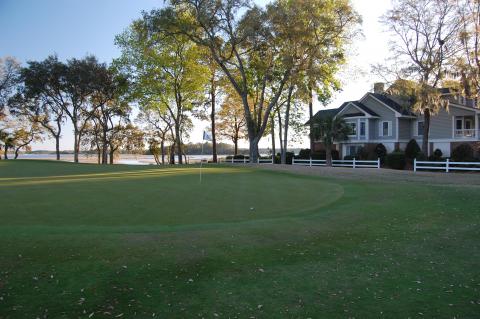Tens of thousands of retirees and those in the pre-retirement planning stages rely on the judgment of Where to Retire magazine, whose circulation reaches well into the six-figure range. But as we indicated in our last article here, Where to Retire's list of the top 100 planned communities in America appears to ignore communities that do not advertise in its publication. The list also excludes those communities that are sold out, where the only properties on the market are those offered by private sellers. Many of these planned communities offer more value for less money than the communities on Where to Retire's list.
Potential buyers who wander into the real estate office at the nicely laid out and accessorized Ocean Ridge Plantation in Sunset Beach, NC, may walk away with half the story about properties for sale in the community. Worse, they might wind up buying one they could have owned for less just down the street.
The developer of Ocean Ridge, which is a community I can recommend for its multiple golf courses, nice landscaping and full roster of built amenities, has a significant inventory of unsold home sites. Nevertheless, some lot owners

The Dataw Island Club and community did not make Where to Retire's list. Hard to believe as Dataw offers outstanding golf, views and other amenities the equal or better than some of the magazine's choices.
Developers, not those shopping for a home, are aided and abetted by Where to Retire magazine. How else to explain the lack of fully developed communities on Where to Retire's list of "America's 100 Best Master-Planned Communities," featured in its July/August issue?
Anyone thinking of where to retire on the east coast should absolutely consider The Landings on Skidaway Island, near Savannah, where residents enjoy all the pleasures of a gated community within just 20 minutes of downtown Savannah, one of the nation's most interesting cities. The Landings features all the amenities an active couple could want, including six excellent golf courses, a wide range of home choices (and some privately owned lots) and prices that are extremely competitive for what they offer. For example, a couple from New England I worked with last year was able to purchase a beautiful home behind one of the greens at The Landings for a mere $400,000, about 25% lower than comparable homes in the neighborhood. The Landings is large enough that it provides something for everyone -- young families, empty nesters and retirees seem to live in perfect harmony in the vibrant Landings.
The nice Aiken, SC, golf communities of Woodside Plantation and
Mountain communities in North Carolina are way under-represented on Where to Retire's list. Asheville is one of the most popular destination areas for retirees, and features some excellent golf and other communities, but you wouldn't know it from the magazine's list. Just two mountain communities, and none in the popular areas of Asheville, Brevard, Maggie Valley, Waynesville and Cashiers, make the cut in the magazine. How to explain the lack of such popular and well thought out communities as Trillium, Laurel Ridge and the more upscale Cliffs Communities, Balsam Mountain Preserve, Bright's Creek -- all of these with plenty of developer lots remaining but no advertising presence in Where to Retire. If Where to Retire believes these are too expensive for its readership, it should add a footnote to its list.
Where to Retire offers some information I find useful, such its helpful chart on cost of living comparisons city to city. But a publication whose stated mission is to help people find the best-planned community should include in its calculations all planned communities, those that advertise in the publication and those that don't, and fully matured communities as well as those struggling to sell properties. Until then, anyone seriously looking for objective guidance on where to retire would be advised to steer clear of Where to Retire.

Wachesaw Plantation offers some of the best values in homes in the Myrtle Beach area, and its private Tom Fazio designed course is one of the five best of 120 courses in the area. But the community does not make Where to Retire's list. (Grande Dunes, an advertiser, does however.)























